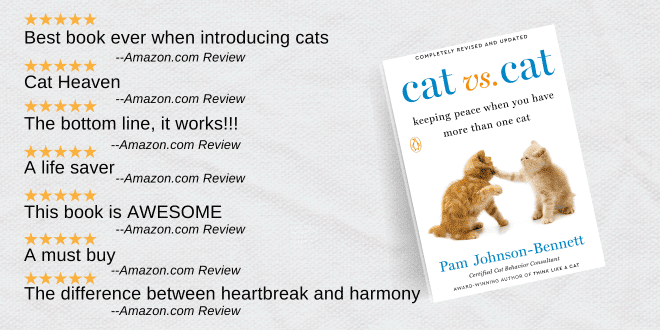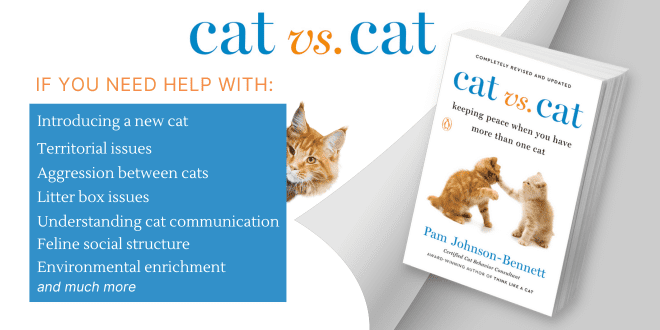
Listen to the audio version of this article
Having more than one cat is wonderful. It’s comforting to know that your cats have each other for companionship when you aren’t at home. It’s heartwarming to watch your cats groom each other, play together and share a special bond.
Litter Box Overcrowding
The one aspect of living in a multicat home that isn’t as much fun is the fact that there’s more poop and pee in the litter box. This can be where many cat parents tend to drop the ball – not because they’re neglecting to keep the box clean, but simply because there isn’t enough litter box space to go around.
How Many Litter Boxes Do You Need?
So, just how many litter boxes should you have? Ideally, there should be the same number of boxes as you have cats plus one extra box for good measure. Even if you try to keep the litter box perfectlyclean, some cats don’t like sharing when it comes to their elimination location. It’s more difficult to keep one box clean enough for multiple cats. When you’re gone at work all day, you don’t want one of the cats to enter a litter box and not be able to find a clean enough spot in order to urinate. An overcrowded litter box can’t possibly be kept clean enough and the result may end up being that a cat feels he has no choice but to pee somewhere else. I promise you, the place he’ll end up choosing won’t be to your liking.
Shortcuts Don’t Work
You may think you can get around the cleaning issue by investing in a self-cleaning electronic litter box but that won’t address the fact that some cats aren’t comfortable sharing the box. Cats who get along in every other aspect of their lives together may feel anxiety when they have to use a litter box another cat uses.
Location Matters
When you put additional boxes in the environment, location is key. Don’t just line several boxes up right next to each other because that essentially becomes just one giant box from a cat’s point of view. While that may be convenient for you, it can be stressful if location chosen is in an area where a particular cat doesn’t feel comfortable. In some multicat households there may be one or two cats who don’t want to cross through another cat’s area to get to the litter box.
Situate litter boxes in various parts of the house. If you know a particular cat tends to stay in a certain area, a litter box should go there. Try to create an environment where it’ll be convenient for all cats to gain access to the litter box without added anxiety.
Offer Choice
Although you can’t assign a cat to a specific litter box, the more choice you offer, the less stress there will be in the household. By placing boxes around the environment you’ll also be able to offer individual cats more litter choice as well. You may have one cat who doesn’t like the litter substrate that the other cats use so you can offer a type he prefers in the location nearest him. Problems often occur when a cat feels he has no choice and is backed in a corner. Look at your environment from the point of view of all your cats, create litter box convenience and choice. While it may be extra work to have to scoop and clean multiple litter boxes, the pay-off is huge in terms of the reduced chance of litter box aversion problems, reduced stress and an increase in feline happiness!
You can find more information on cat behavior and training in the articles on our website as well as in Pam’s best-selling books. If you have a question regarding your cat’s behavior or health, please contact your veterinarian. This article is not intended as a replacement for your cat’s veterinary care. This article is for information purposes only and not offering medical advice or providing a medical diagnosis.




